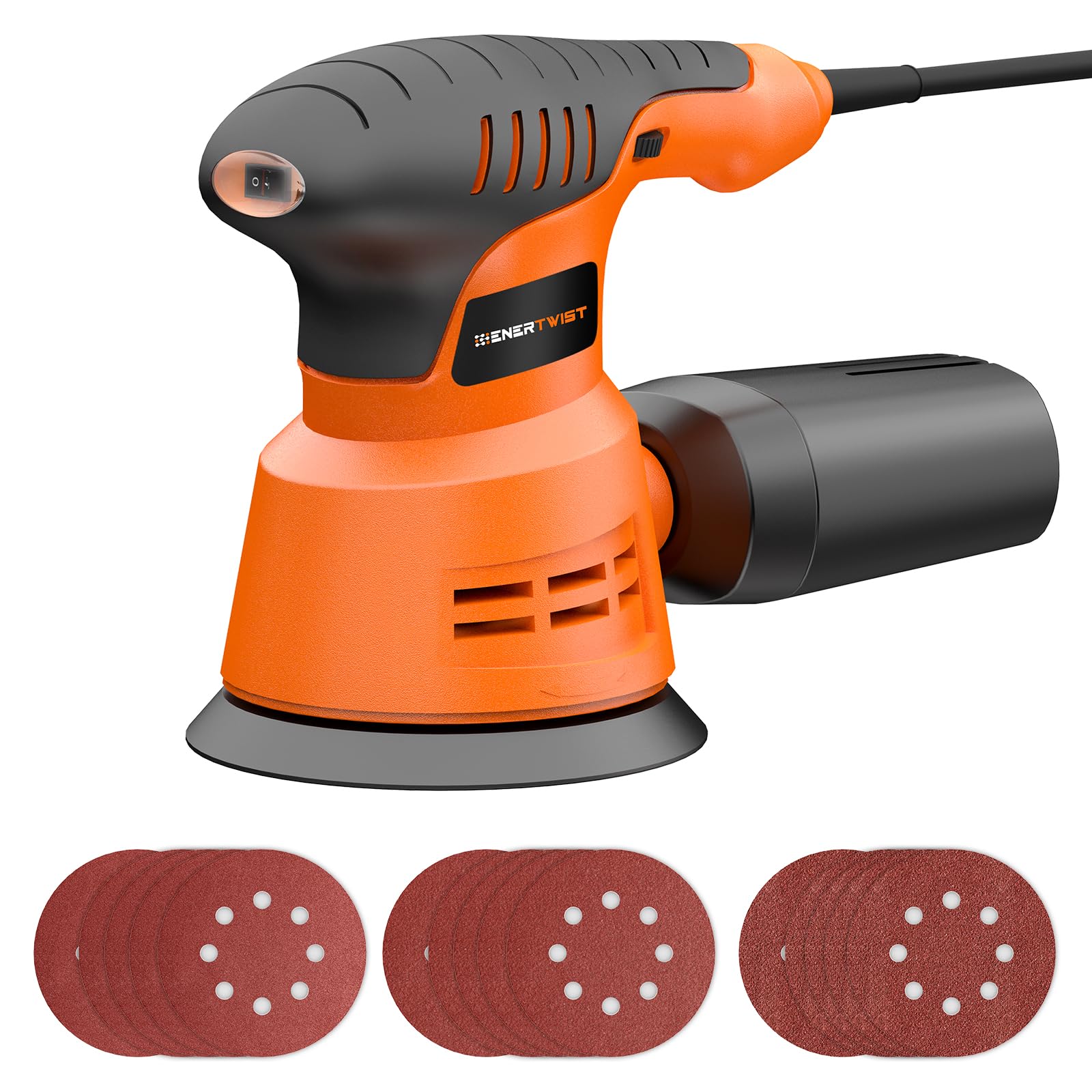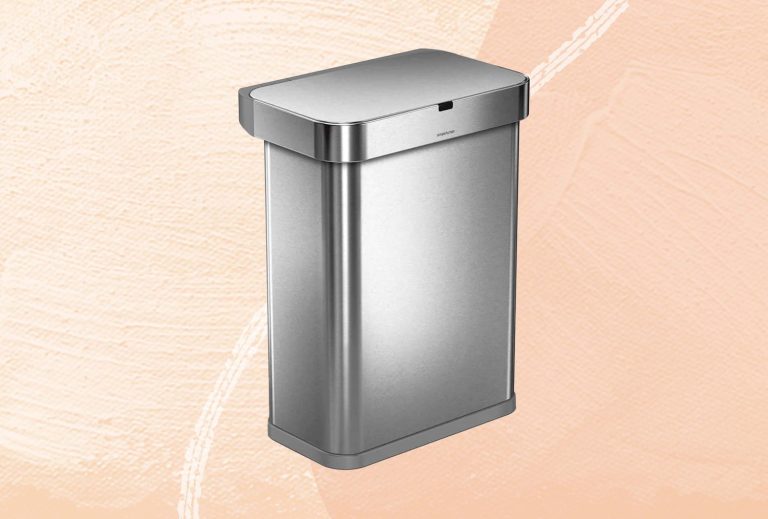9 Best Orbital Sanders for a Perfect Finish: Top Picks for Woodworking Pros and DIY Enthusiasts
When tackling a woodworking project, achieving a smooth, flawless finish is crucial. That’s where an orbital sander comes into play. This versatile tool can save you hours of manual sanding and deliver professional results with minimal effort.
But with so many options on the market, how do you choose the best one? We’ve done the legwork for you. In this article, you’ll discover the 9 best orbital sanders that combine power, efficiency, and ease of use. Whether you’re a seasoned pro or a DIY enthusiast, these top picks will help you elevate your sanding game.
Key Features of Top Orbital Sanders
When choosing the best orbital sander, it’s essential to consider several key features. Here are the attributes that make a top-notch sander stand out in the market.
Power and Speed
Power matters. Top orbital sanders usually have motors ranging from 2.0 to 3.0 amps, delivering the necessary force to handle various materials. Speed is also crucial; look for sanders offering variable speed control, typically between 7,000 and 12,000 orbits per minute (OPM). This flexibility helps you adapt to different sanding tasks, whether rough or fine.
Durability and Design
Durability counts. High-quality sanders feature robust construction with durable materials like heavy-duty plastic and metal components. Some models even include sealed switches and dust-proof bearings to extend the tool’s lifespan. Design contributes to user satisfaction, with features like low-vibration mechanisms and balanced weight distribution ensuring smoother operation.
Ease of Use and Ergonomics
Comfort is key. Top orbital sanders prioritize ergonomics with features such as soft-grip handles and adjustable front handles for better control. Simple, accessible controls and easy-to-change sanding pads contribute to user-friendly operation. Dust collection systems, including integrated vacuum adapters, help maintain a cleaner workspace, enhancing ease of use.
Review of the 9 Best Orbital Sanders
Choosing the perfect orbital sander can make a big difference in your woodworking projects. Below, we’ve reviewed the nine best models for different users.
Best for Professionals
- Festool 575074 RO 150: This powerful tool offers a professional-grade performance with a 720-watt motor and a dual-mode sanding capability. Its 13.1-pound weight ensures stability, and the MMC Electronics control system provides consistent speed and power.
- Bosch GET75-6N: Known for its efficient dust extraction system, this sander features a 7.5-amp motor and variable speed control (290-640 OPM). Its ergonomic design reduces fatigue during long sessions.
Best for DIY Enthusiasts
- Makita BO5041K: Compact and versatile, this model has a 3-amp motor and variable speed control (4000-12000 OPM). Its rubberized palm grip ensures comfort, making it ideal for home improvement projects.
- DEWALT DWE6423K: Offering a balance of performance and price, this sander has a 3-amp motor and runs at variable speeds (8000-12000 OPM). Its shorter height design allows for better control and tracking.
- Black+Decker BDERO100: Perfect for occasional use, this budget-friendly sander features a 2-amp motor and a compact design. It’s easy to maneuver and store, making it a great tool for weekend DIY tasks.
- SKIL SR211601: User-friendly and efficient, this model has a 2.8-amp motor and variable speed (7000-13000 OPM). Its dust container with micro-filtration keeps your workspace clean, and the ergonomic design ensures easy handling.
- Ryobi P411: Battery-powered and lightweight, this cordless sander is convenient for beginners. Its 18V motor provides ample power for small projects, and the ergonomic handle ensures a comfortable grip.
- CRAFTSMAN CMEW231: Simple to use, this sander has a 3-amp motor and fixed speed (12000 OPM). It’s designed for straightforward operation with an intuitive dust bag attachment system.
- Genesis GPS080: This entry-level option features a 1.5-amp motor and a compact form factor. Its low price and straightforward controls make it an excellent choice for someone starting in woodworking.
These nine orbital sanders cater to all skill levels and project types, ensuring you can find the right tool for your needs.
Detailed Reviews of Each Orbital Sander
Explore in-depth reviews of the top nine orbital sanders, uncovering unique features and benefits to make your decision easier.
Model 1: Features and Benefits
The Festool 575074 RO 150 packs a 720-watt motor, delivering robust power for heavy-duty tasks. It offers a dual-mode sanding feature, allowing both coarse and fine sanding. The ergonomic design reduces user fatigue, making it ideal for long hours of work.
Model 2: Features and Benefits
The Bosch GET75-6N features a powerful 7.5-amp motor and variable speed control. It includes a turbo mode for aggressive material removal and a smooth finish mode for precision work. The soft-grip top and body improve handling comfort.
Model 3: Features and Benefits
The Makita BO5041K offers a 3-amp motor and an adjustable front handle for maneuverability in tight spaces. Its variable speed control lets you adjust to the job’s demands, and the efficient dust collection system keeps your workspace clean.
Model 4: Features and Benefits
The DEWALT DWE6423K incorporates a 3-amp motor capable of variable speed settings. Its compact design ensures better control and precision. The improved dust-sealed switch enhances durability by protecting components from dust ingestion.
Model 5: Features and Benefits
The Black+Decker BDERO100 is a budget-friendly option with a 2-amp motor suitable for light to medium tasks. It features a compact size for ease of use in tight spots and a dust-sealed switch for increased lifespan.
Model 6: Features and Benefits
The SKIL SR211601 offers a 2.8-amp motor and a pressure control system that indicates optimal sanding pressure. The dust canister with a microfilter keeps the workspace cleaner, enhancing visibility and safety.
Model 7: Features and Benefits
The Porter-Cable 382 features a 1.9-amp motor, ideal for light-duty sanding. The dual-plane counterbalanced fan reduces vibration making it more comfortable during extended use. Its sealed switch boosts longevity by keeping dust out.
Model 8: Features and Benefits
The Hitachi SV13YST showcases a 230-watt motor and a powerful dust collection system. It also offers a soft elastomer grip, reducing vibration and increasing comfort during prolonged use.
Model 9: Features and Benefits
The Ridgid R2601 includes a 3-amp motor with a variable speed dial and soft start technology. It offers a dual-bearing pad mount that reduces vibration and noise, providing a quieter and more stable operation.
By understanding the unique features and benefits of each model, you can confidently choose the best orbital sander for your specific needs.
Comparison and Ranking
Choosing the right orbital sander can be a game-changer for your woodworking projects. Let’s dive into a detailed comparison and ranking based on performance and price.
Compare Performance
Performance is a critical factor when selecting an orbital sander. It influences the finish quality and efficiency.
- Festool 575074 RO 150: Offers powerful 720-watt motor, ideal for professional-grade projects.
- Bosch GET75-6N: Features a dual-mode sanding option, versatile for heavy-duty and finishing tasks.
- Makita BO5041K: Equipped with a 3.0 AMP motor, perfect for versatile use.
- DEWALT DWE6423K: Boasts a 3.0 AMP motor with variable speed control, offering precision.
- Porter-Cable 382: With a 1.9 AMP motor, it’s reliable for consistent performance.
- Ryobi P411: Cordless design with adequate motor power for light-duty use.
- SKIL SR211601: Provides a 2.8 AMP motor, delivering robust efficiency for DIY tasks.
- Black+Decker BDERO100: Houses a 2.0 AMP motor, suitable for light finishing works.
- Tacklife PRS01A: Features a 3.0 AMP motor, offering speed control for detailed work.
Compare Price
Price often dictates the choice, especially for budget-conscious users. Here’s how they stack up:
| Model | Price Range |
|---|---|
| Festool 575074 RO 150 | $600 – $650 |
| Bosch GET75-6N | $250 – $300 |
| Makita BO5041K | $120 – $150 |
| DEWALT DWE6423K | $70 – $100 |
| Porter-Cable 382 | $50 – $70 |
| Ryobi P411 | $40 – $60 |
| SKIL SR211601 | $40 – $60 |
| Black+Decker BDERO100 | $30 – $40 |
| Tacklife PRS01A | $30 – $40 |
Assessing both performance and price helps ensure you’re getting the best orbital sander for your needs and budget.
Choosing the Right Orbital Sander for Your Needs
Selecting the perfect orbital sander can seem daunting, but focusing on specific factors can simplify the process. Understanding your needs and comparing features will help you make an informed choice.
Factors to Consider Before Buying
- Power Source: Decide whether you want a corded or cordless sander. Corded sanders provide consistent power for extended use, while cordless models offer portability and convenience.
- Orbital Speed: Look for variable speed control to adjust the sanding speed based on the material and task. Faster speeds remove more material quickly, but lower speeds provide finer finishes.
- Ergonomics: Check the design and weight. A lightweight sander with a comfortable grip reduces fatigue during long projects and enhances control.
- Dust Collection: Evaluate the dust collection system. Effective dust collection keeps your workspace clean and minimizes airborne particles for better visibility and health safety.
- Durability: Consider the build quality and brand reputation. Reliable brands usually offer more durable tools that can withstand rigorous use.
- Pad Size and Type: Consider the size and type of the sanding pad. Larger pads cover more area quickly, while smaller pads offer precision. Hook-and-loop pads are easier to change than adhesive ones.
- For Beginners: If you’re new to woodworking, the Black+Decker BDERO100 is user-friendly and budget-friendly, making it ideal for beginners.
- For Professional Use: Professionals might prefer the Bosch ROS20VSC for its superior dust collection and variable speed control, ensuring a high-quality finish on diverse materials.
- For Heavy-Duty Jobs: The Makita BO5041 stands out for its powerful motor and ergonomic design, suitable for prolonged heavy-duty use.
- For Fine Finishing: The DEWALT DWE6423K offers precise variable speed control, perfect for detailed, fine finishing tasks.
- For DIY Enthusiasts: The Ryobi P411 is a reliable, affordable option, with convenient cordless flexibility for various DIY projects.
Choosing the right orbital sander involves understanding the specifics of your project needs. Keep your goals and preferences in mind as you compare features and read reviews.
Maintenance Tips for Orbital Sanders
Proper maintenance of your orbital sander ensures it delivers optimal performance and extends its lifespan. Here are some essential tips:
Routine Maintenance
Clean the sander after each use. Use compressed air or a soft brush to remove dust and debris, especially around the pad and vents. Regularly inspect the pad for wear and tear. Replace it if it shows signs of damage or excessive wear to maintain efficiency. Lubricate moving parts monthly to prevent wear and ensure smooth operation. Always store the sander in a dry, dust-free environment to avoid moisture damage.
Troubleshooting Common Issues
Identify and address common problems quickly. If the sander isn’t starting, check the power source and cord for any damage. Inconsistent sanding can result from a worn pad, so replace it if necessary. If you notice excessive vibration, tighten any loose screws and check for balanced pad rotation. For unusual noises, inspect the internal components and replace any worn-out parts. By promptly troubleshooting, you can prevent costly repairs and downtime.
Conclusion and Final Thoughts
Choosing the right orbital sander can significantly impact the quality of your woodworking projects. By considering factors like power source, orbital speed, ergonomics, and dust collection, you’re better equipped to find a model that suits your needs. Regular maintenance and troubleshooting can also extend the life of your tool and ensure consistent performance. Whether you’re a professional or a DIY enthusiast, understanding your project requirements and taking care of your sander will lead to smoother finishes and more efficient work.






